Modernism
1/61
There's no tags or description
Looks like no tags are added yet.
Name | Mastery | Learn | Test | Matching | Spaced |
|---|
No study sessions yet.
62 Terms
Dadaism
Early 20th-century art movement, whose members sought to ridicule the culture of their time through deliberately absurd performances, poetry, and visual art. Often described as nihilistic—that is, rejecting all moral values.
Marcel Duchamp
French artist associated with the Dadaist movement who broke down the boundaries between works of art and everyday objects. His irreverence for conventional aesthetic standards led him to devise his famous ready-mades and heralded an artistic revolution. Works: L.H.O.O.Q., Fountain, Why Not Sneeze, Rose Selave?
Surrealism
Art based on dreamlike images from the subconscious, appearing as a recognized movement beginning in the 1920's. Rather than abandoning forms, surrealists render them with the illogic of dreams.
Salvador Dalí
Spanish painter, writer, and member of the surrealist movement. His paintings from this period depict dream imagery and everyday objects in unexpected forms, such as the famous limp watches in The Persistence of Memory.
Marc Chagall
Russian painter whose work strongly presaged the Surrealist movement. His work treats subjects in a vein of humor and fantasy that draws deeply on the resources of the unconscious. His personal and unique imagery is often suffused with exquisite poetic inspiration. Works: I and The Village, The Circus Horse
Paul Klee
A Swiss - born Surrealist painter and graphic artist whose personal, often gently humorous works containing allusions to dreams, music, and poetry. Works: Flower Myth, Katze und Vogel, Red Balloon
Giorgio de Chirico
Major Italian painter, who founded the metaphysical school. He studied art in Athens and in Munich, where he was strongly influenced by the allegorical works of the 19th-century Swiss painter Arnold Böcklin. Works: Replica of the Disquieting Muses, Love Song
Frida Kahlo
Mexican painter best known for her uncompromising and brilliantly coloured self-portraits that deal with such themes as identity, the human body, and death. Although she denied the connection, she is often identified as a Surrealist. Works: Self-Portrait with Thorn Necklace and Hummingbird, The Two Fridas
Abstract Expressionism
The post-WWII movement centered in New York in which paint was freely applied to a large canvas, expressing the energy and feelings of the artist non-objectively, usually with no emphasized focal point (all areas of the canvas are equally important).
Jackson Pollock
American abstract painter, who developed a technique for applying paint by pouring or dripping it onto canvases laid on the floor. With this method he produced intricate interlaced webs of paint, as in Black and White in 1948.
Hans Hoffman
German painter who was one of the most influential art teachers of the 20th century. He was a pioneer in experimenting in the use of improvisatory techniques; his work opened the way for the first generation of post-World War II American painters to develop Abstract Expressionism.
Mark Rothko
American painter whose works introduced contemplative introspection into the melodramatic post-World War II Abstract Expressionist school; his use of colour as the sole means of expression led to the development of Colour Field Painting.
Andy Warhol
American painter, motion-picture director and producer, and publisher, who was a leader of the pop art movement, which based artwork on images taken from mass, or popular, culture. He iss considered one of the most important American artists of the 20th century. Works: Marilyn Diptych, 200 Campbell Soup Cans, Mao 6
Roy Lichtenstein
Artist of the pop art movement who startled the art world in 1962 by exhibiting paintings based on comic book cartoons. Work: BLAM!
Richard Hamilton
He was frequently referred to as “the father of Pop art.” Although much of his work parodied contemporary culture in the 1950s and ’60s, his reputation as an artistic pioneer rested largely on his landmark collage poster 'Just What Is It That Makes Today’s Homes So Different, So Appealing?'
Optical Art
The recognizable object is totally eliminated in favor of geometric abstraction. The artists produce kinetic effects, arrangements of colors, lines and shapes or some combinations of these elements
Mauritz Ecsler
Dutch graphic artist of the optical art movement known for his detailed realistic prints that achieve bizarre optical and conceptual effect
Bürolandschaft
Le Corbusier's approach for the plan of a large German corporation's administrative offices which means "office landscape."
Louis Sullivan
Considered the "Father of Skyscrapers" and the "Father of Modernism". He is regarded as one of the most individual and innovative architects of the developing modern period. He replaced the standard classical ornamentation of the day with highly original, organic architectural details inspired by nature.
"Form Follows Function"
Modernist credo established by Louis Sullivan
Wainwright Building
First modern American skyscraper; designed by Louis Sullivan.
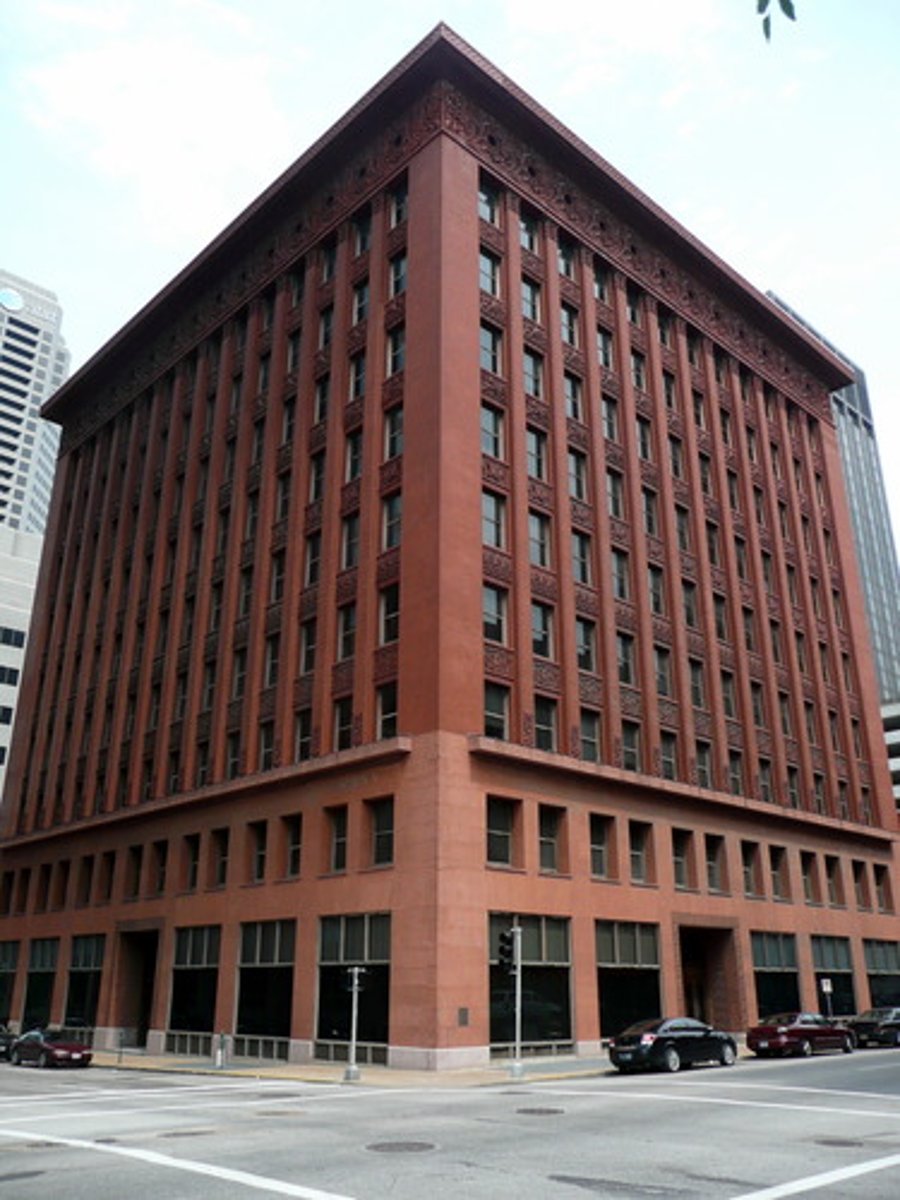
Frank Lloyd Wright
One of the most prolific and influential architects of the 20th century. He defined a North American style of architecture which was rich in emotions and sensitive to its surroundings.
Fallingwater
Also known as the Kaufman Residence by Frank Lloyd Wright in Pennsylvania; it is a special house built on waterfalls. It features interpenetrating of exterior and interior spaces and the strong emphasis placed on harmony between man and nature.

Guggenheim Museum
Museum in New York designed by Frank Lloyd Wright; Circular forms spiral down like the interior of a nautilus shell. Visitors to the museum begin on the upper level and follow a sloping ramp downward through connected exhibition spaces. At the core, an open rotunda offers views of artwork on several levels.
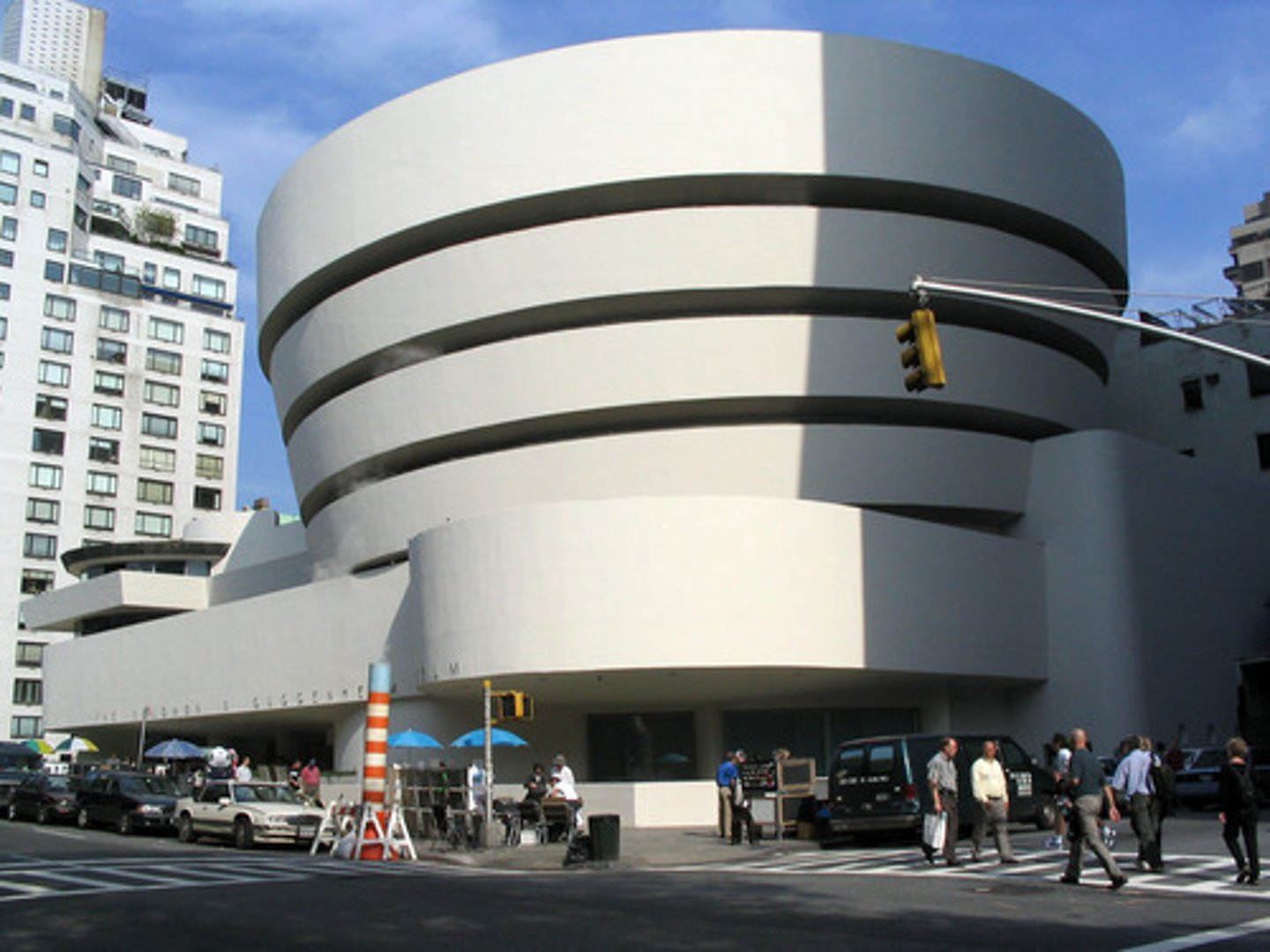
Johnson Wax Building
Adminsitration Building designed by Frank Lloyd Writght in Racine, Wisconsin. It is constructed of more than 200 sizes and shapes of bricks. Light shines into the building through several layers of glass tubes that cannot be seen through.

Usonian Houses
Affordable housing design by Frank Lloyd Wright. Built from the 1930s to the 1950s made from easy to assemble, pre fabricated wood sandwich panels designed to be erected in a simple construction.
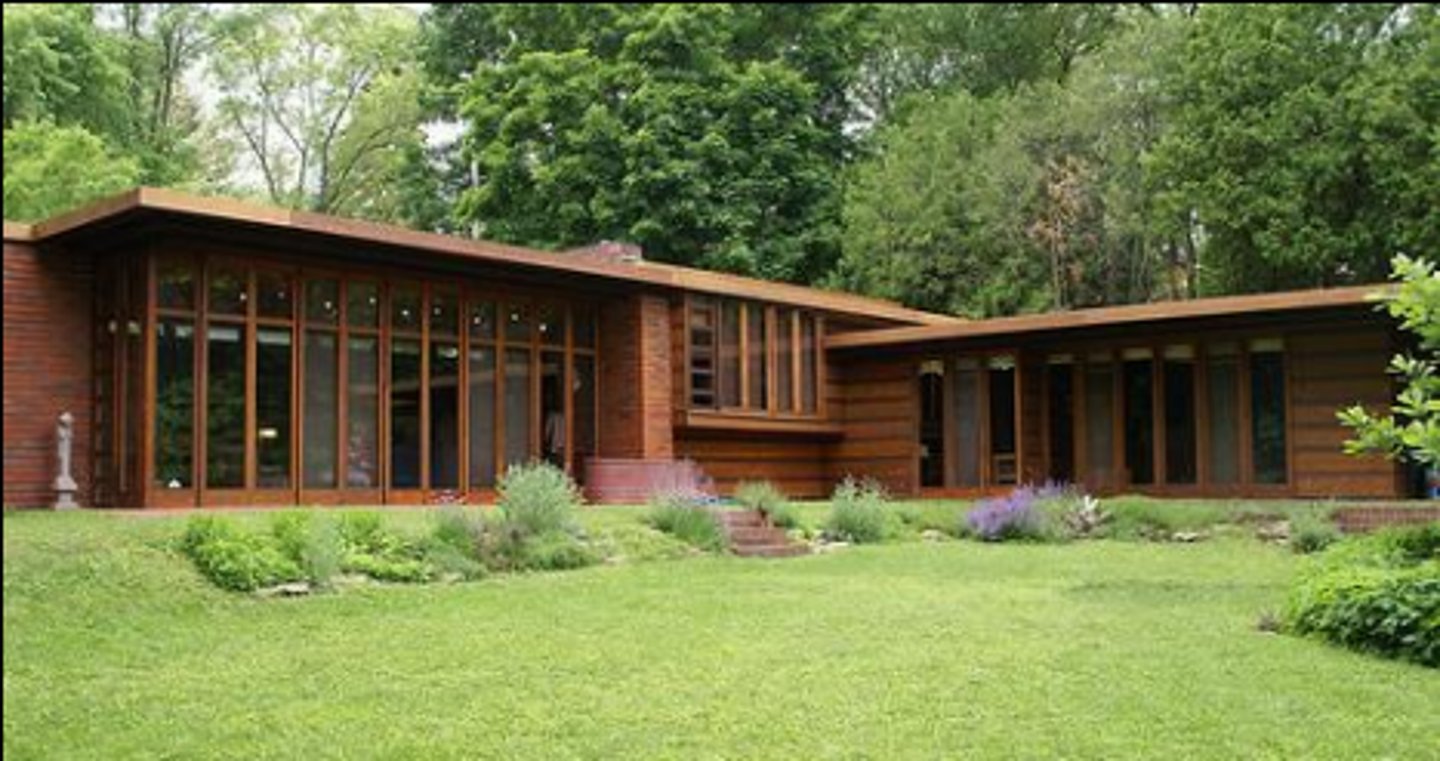
Le Corbusier
Known universally as Corbu (Raven). He wrote “Vers uno architecture” in 1923 in which he made an intriguing link between Greek Temples, gothic cathedrals, aircraft, cars and ocean liners with the new architecture. He also described the house “as a machine for living in.”
Villa Savoye
A weekend house designed by Le Corbusier known for allowing sunlight to pour into the main living quarters and the windows and roof terraces afford views out across the French countryside.

Notre Dame du Haut
A chapel designed by Le Corbusier in Ronchamp, France with a structure that is made mostly of concrete and is comparatively small, enclosed by thick walls, with the upturned roof supported on columns embedded within the walls, like a sail billowing in the windy currents on the hill top.

International Style
Functional architecture devoid of regional character, simple, geometric forms, large, untextured often white surfaces, large areas of glass and general use of steel of reinforced concrete construction. It is an offshoot of Modernism.
UN Headquarters
The large 39 story, 44 ft. tall slab designed by Wallace Harrison has become a worldwide symbol of the UN. The Green glass curtain tower was the first of its kind in new York.
Seagram Building
A skyscraper in the Midtown Manhattan neighborhood of New York City. Designed by Ludwig Mies van der Rohe along with Philip Johnson, Ely Jacques Kahn, and Robert Allan Jacobs, the tower is 515 feet tall with 38 stories.

Brasilia
Cathedral designed by Oscar Niemeyer in Brasília, Brazil. The hyperboloid form of curved concrete columns suggests two hands reaching toward heaven. Natural light streams in through stained glass panels.

Midway 2 Chair
Designed by Frank Lloyd Wright for the Midway Gardens year 1914.
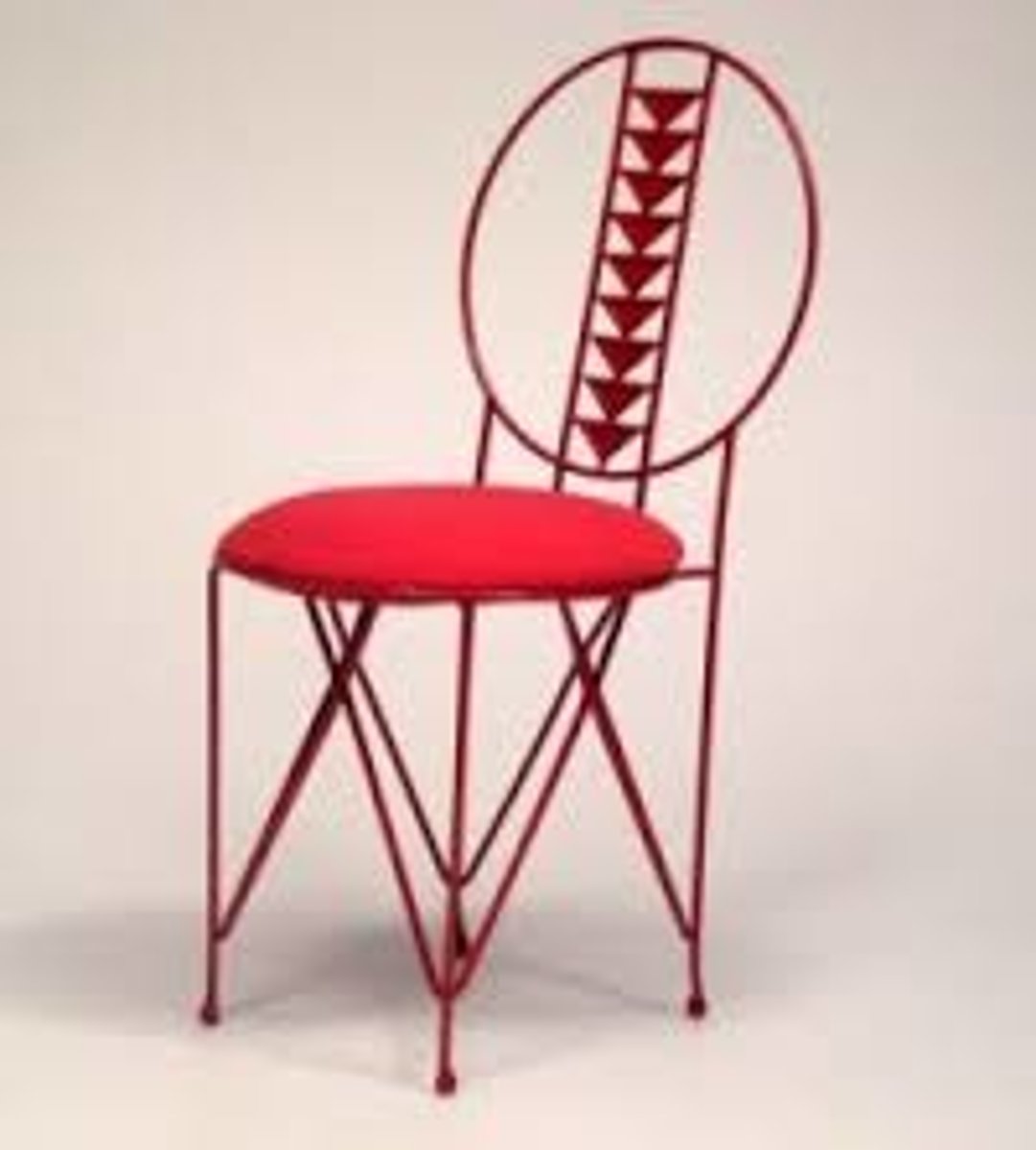
606 Barrel Taliesin Chair
Designed by Frank Lloyd Wright; A solid wood chair-armchair with timeless style and considerable technical-construction complexity designed in 1937.
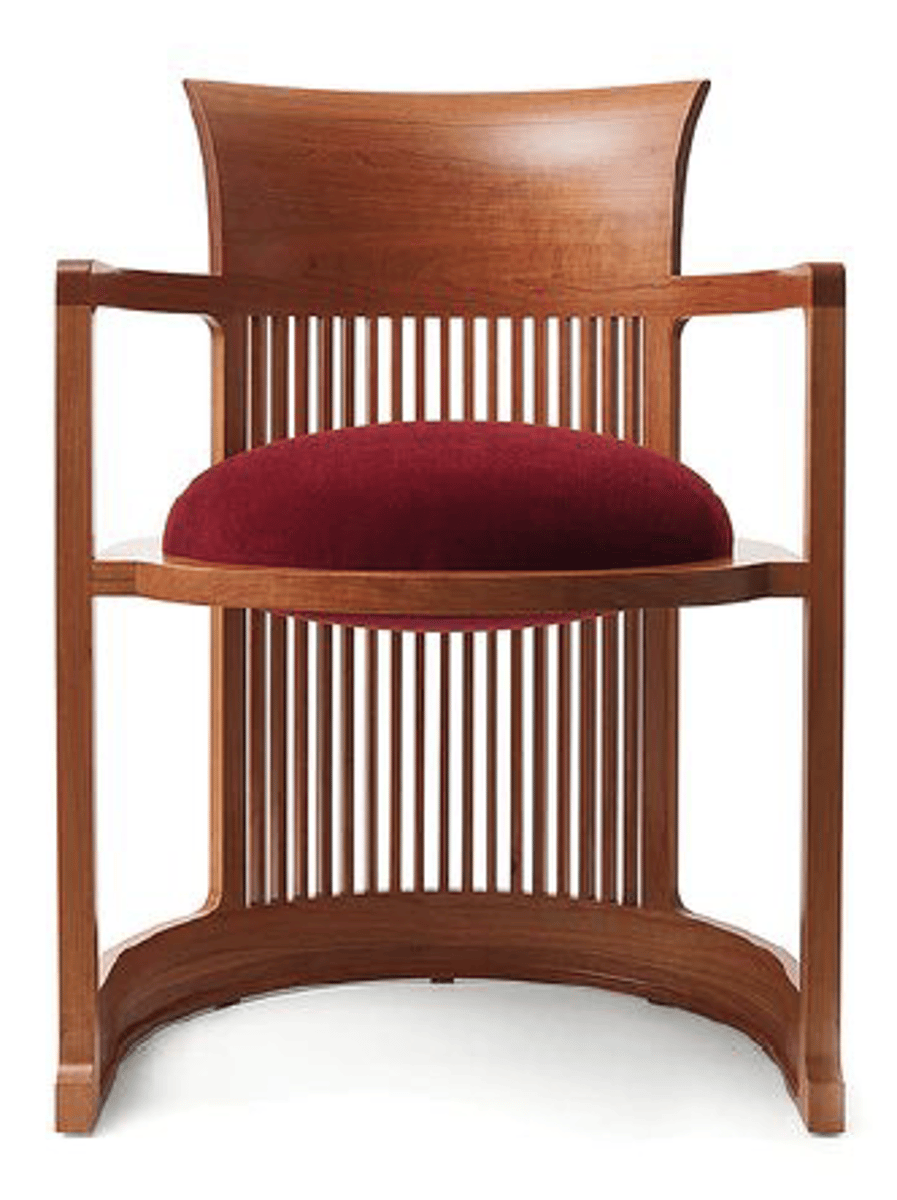
Eames Lounge Chair
Designed by Charles and Ray Eames with the English club chair as their inspiration; it has become one of the most significant furniture designs of the 20th Century.
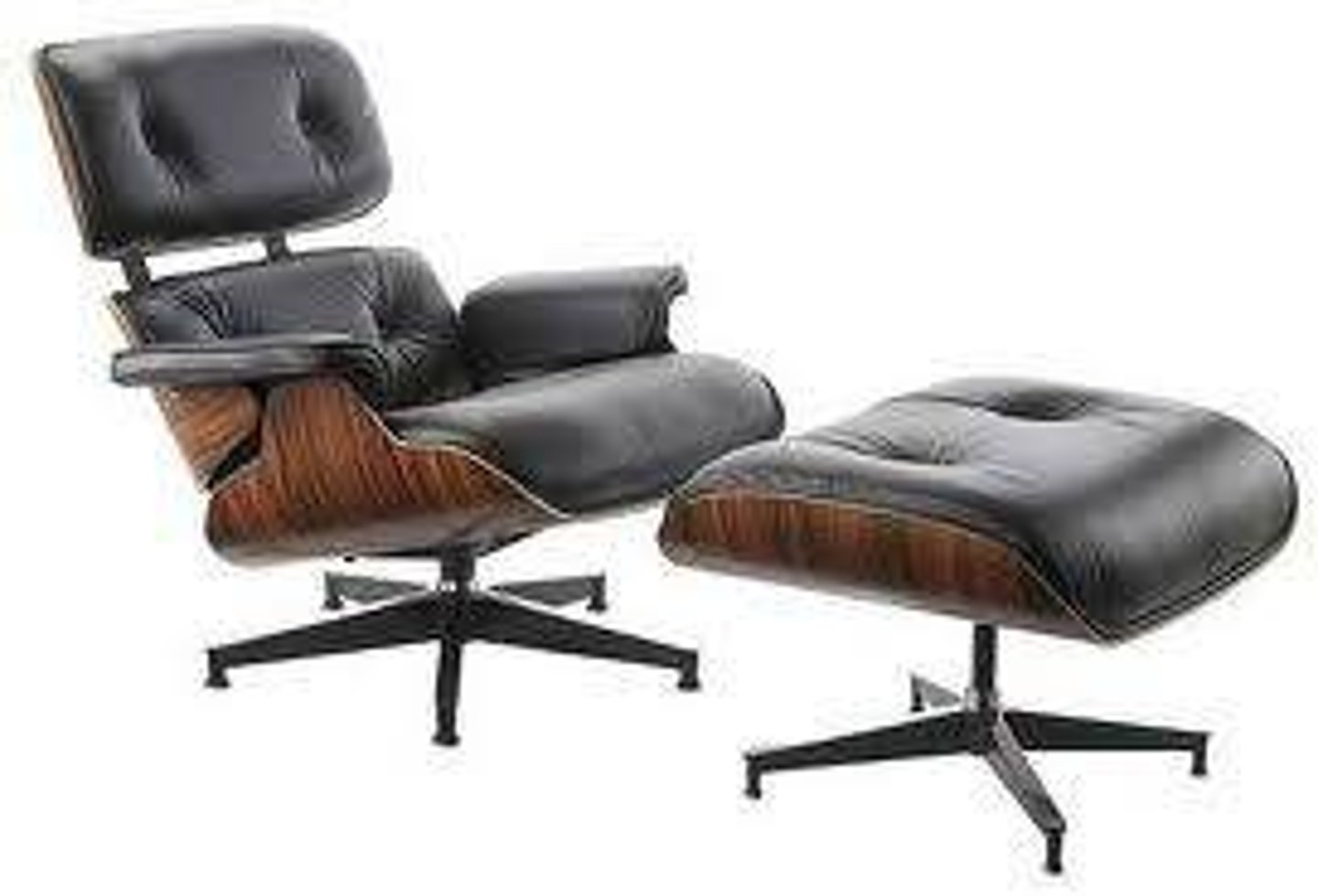
Charles Eames
Considered to be the most significant creative designer to have the most impact on today's design. His 1st chair co-designed with Saarinen won 1st place in the museum of Modern Art's Organic Furniture Competition
LCW Chair
Charles and Ray Eames chair in molded plywood.

La Chaise
Charles and Ray designed this lounge chair for The Museum of Modern Art's 1948 "International Competition for Low-Cost Furniture Design." Its name references both its function as well as Gaston Lachaise's Floating Figure sculpture, whose shape the Eameses thought would fit the chair perfectly.

Peacock Chair
Chair by Hans Wegner; made of teak with paper cord seating. It is a throne-like adaptation of the Windsor chair.

Wishbone chair
Designed by Hans Wagner; The chair features a bentwood armrest and a paper cord rope seat in a woven envelope pattern. The chair is named after the Y or wishbone-shaped backrest.
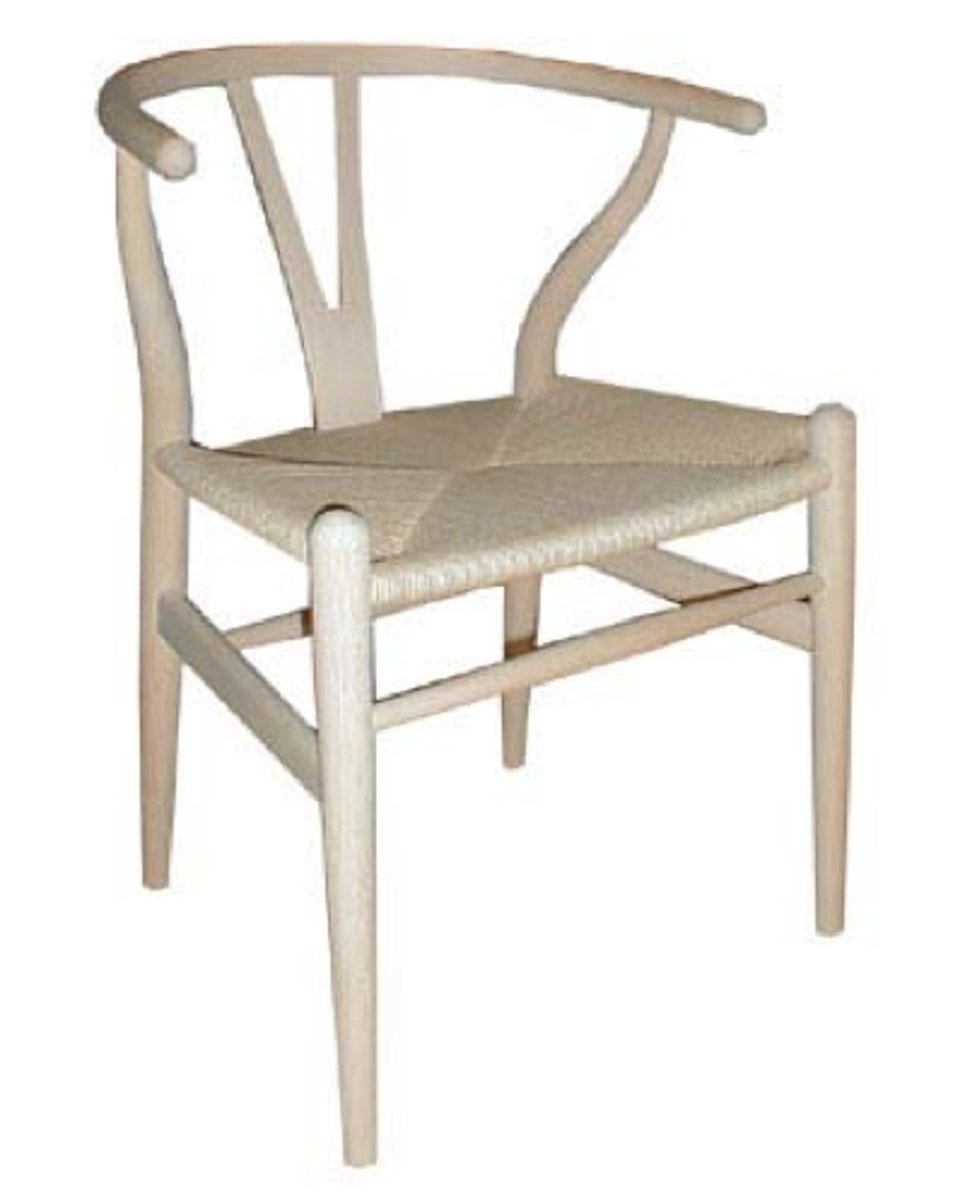
Valet Chair
Designed by Hans Wegner in 1953; solves problems in folding clothes in the most practical manner at bedtime. Unites function with a playful sculptural design. The top rail is shaped as a coat hanger while the seat is basically a box for storing.
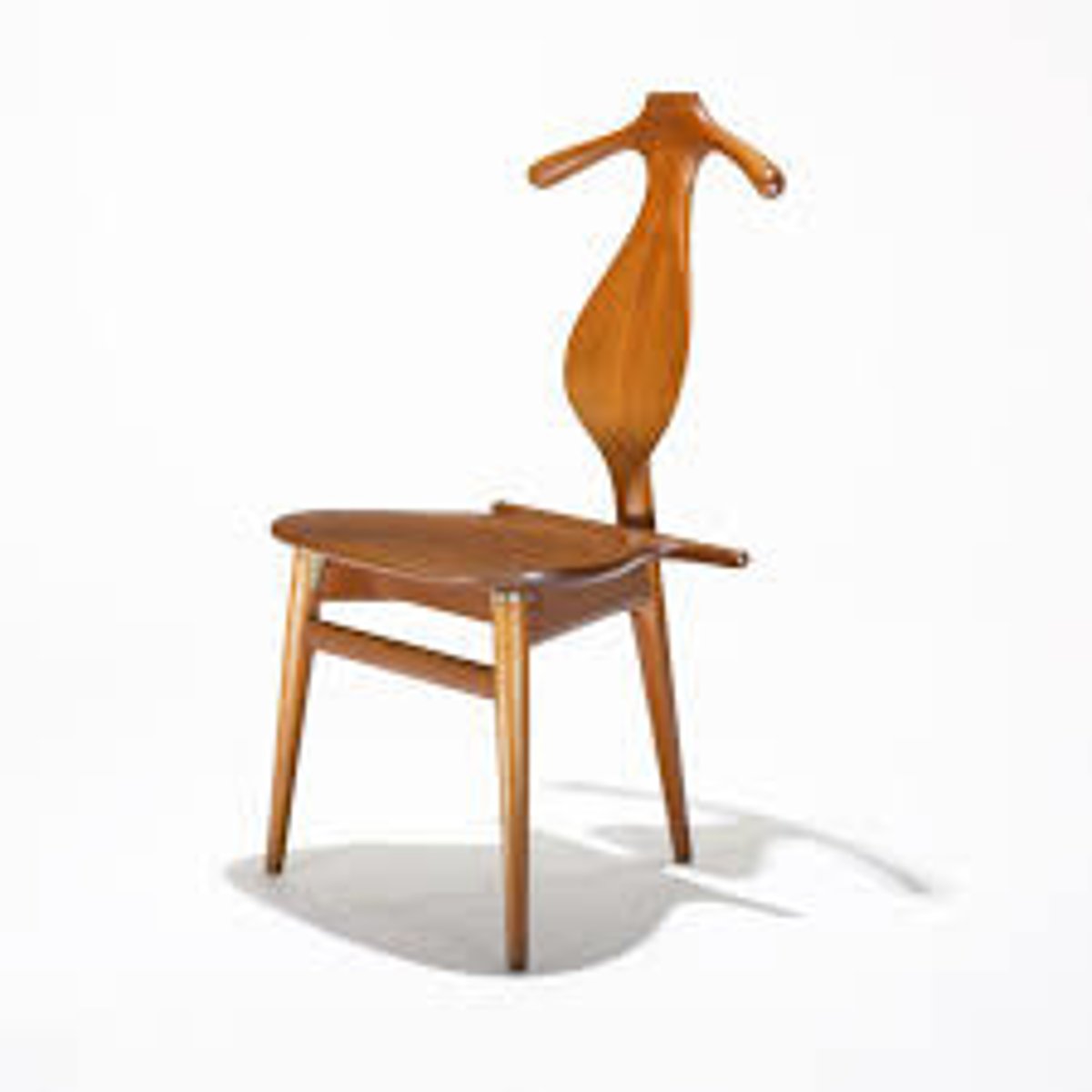
Coconut Chair
It is a lounge chair designed by George Nelson with a curved body that resembles a wedge of coconut. It usually features a metal wire basket and tubular steel base.
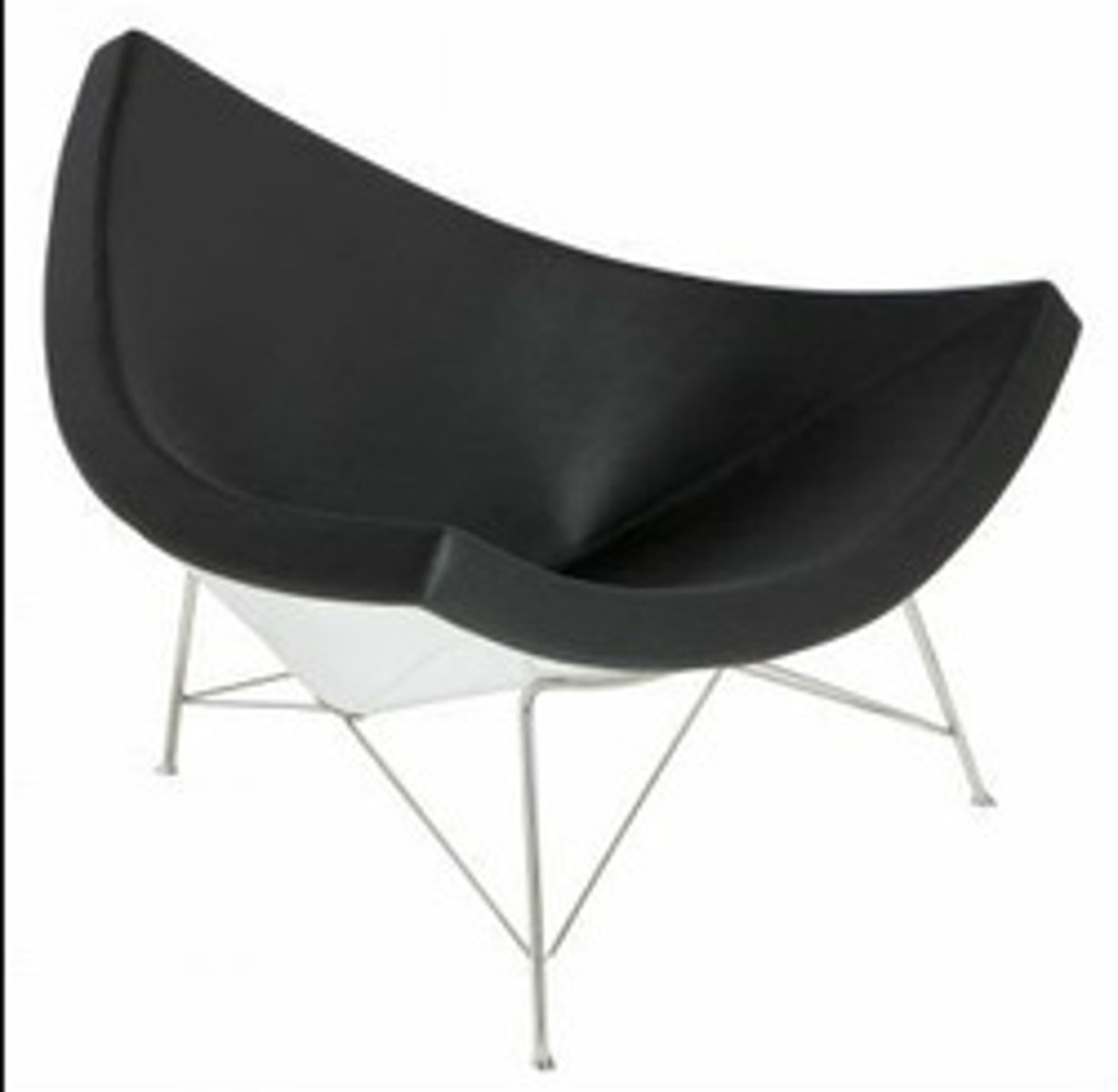
Pretzel Chair
George Nelson chair which was intended to complement Series 5200. The design was inspired by classical Thonet bentwood chairs, used as office seating in the Nelson firm.
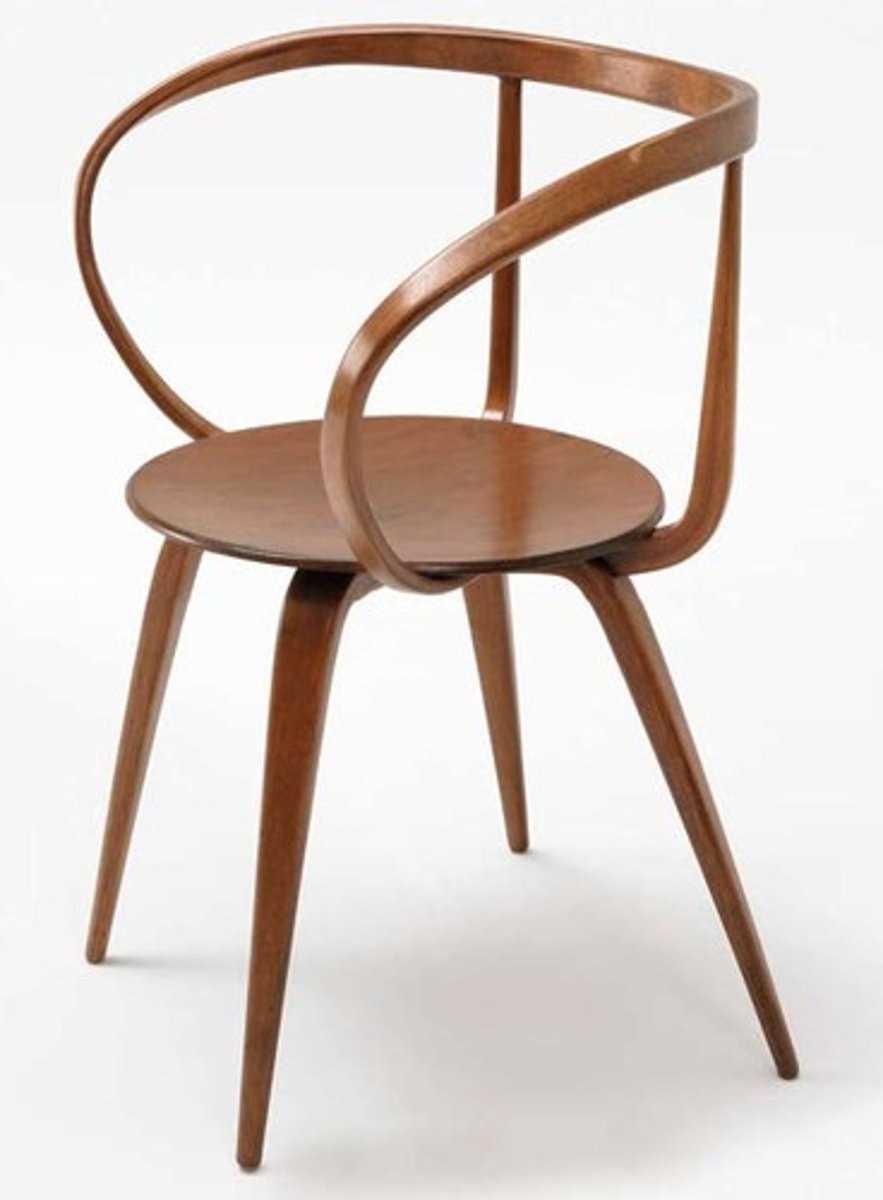
Marshmallow Sofa
Sofa by George Nelson; a. Originally released in 1956, the unconventional sofa is constructed from a steel structure and 18 round cushions reminiscent of the marshmallows, and which thus bequeath the Vitra sofa its name.
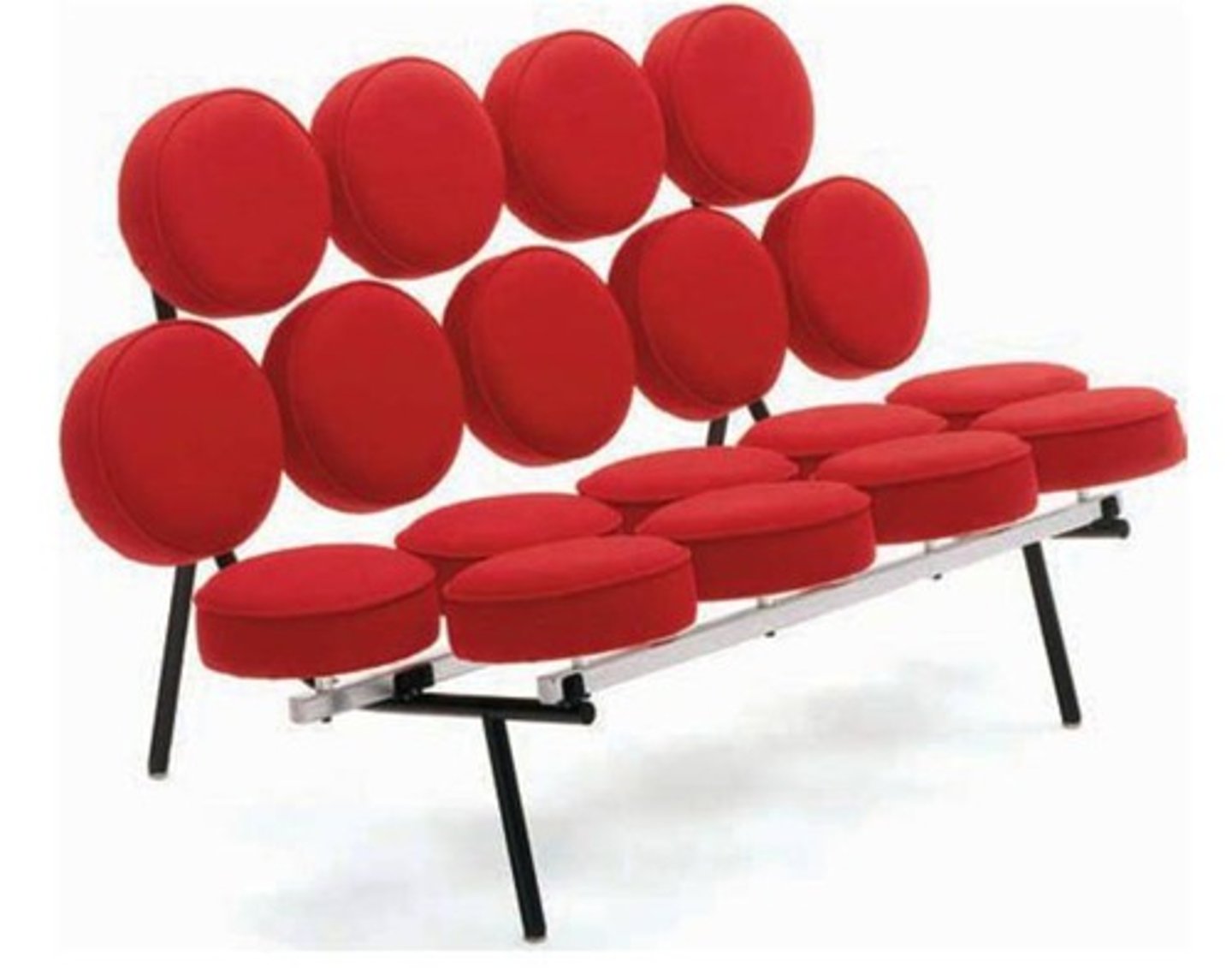
Swan Chair
Arne Jacobsen's chair is made of fabric-covered foam on a moulded fibreglass seat, with a swivelling cast-aluminium base. It was designed for Fritz Hansen of Denmark.
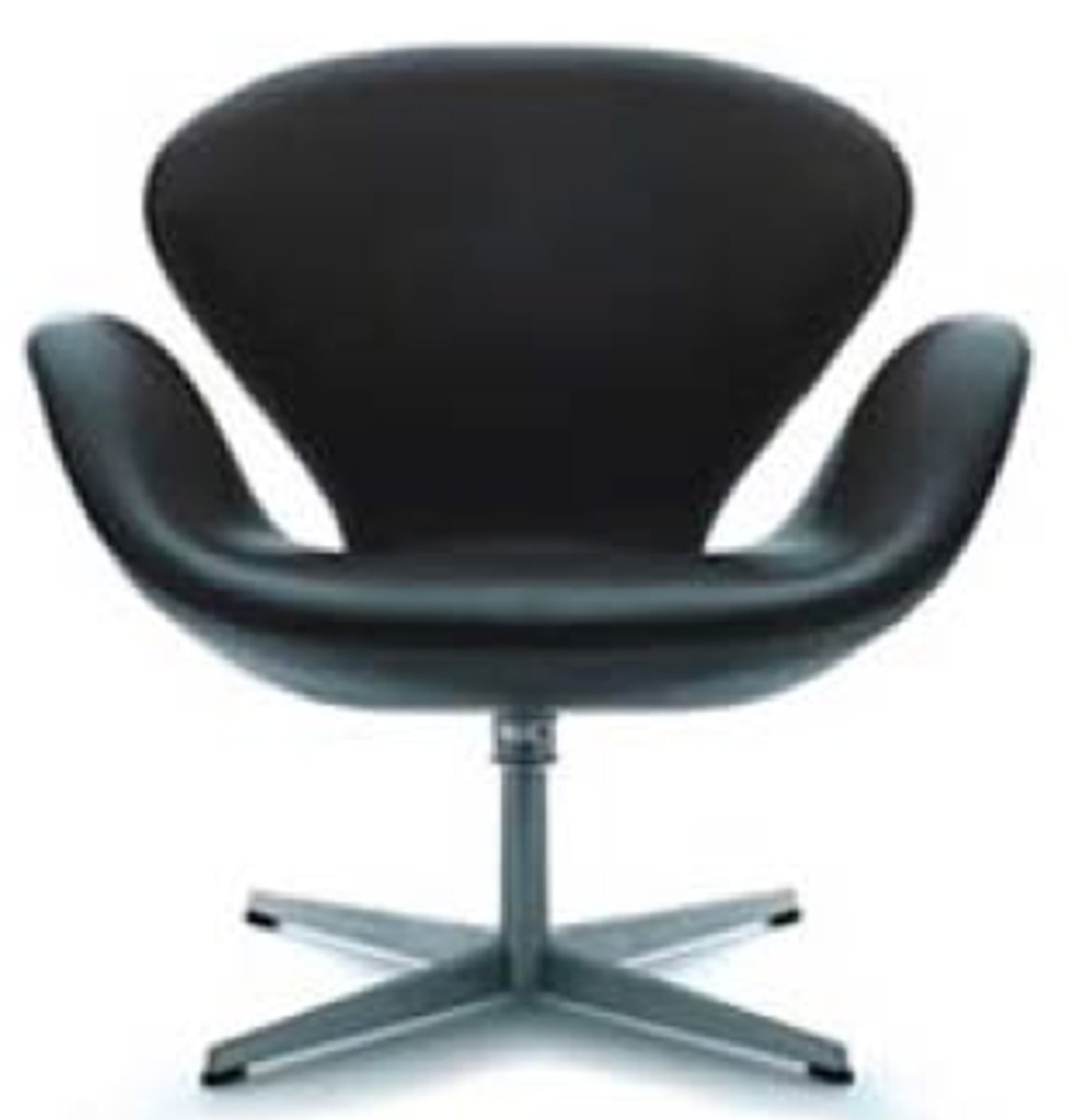
Ant Chair
Arne Jacobsen's chair the chair is made from nine layers of pressure moulded veneer on a base with slim steel legs. Its elegant shape and slender expression disguise its remarkable strength and comfort.
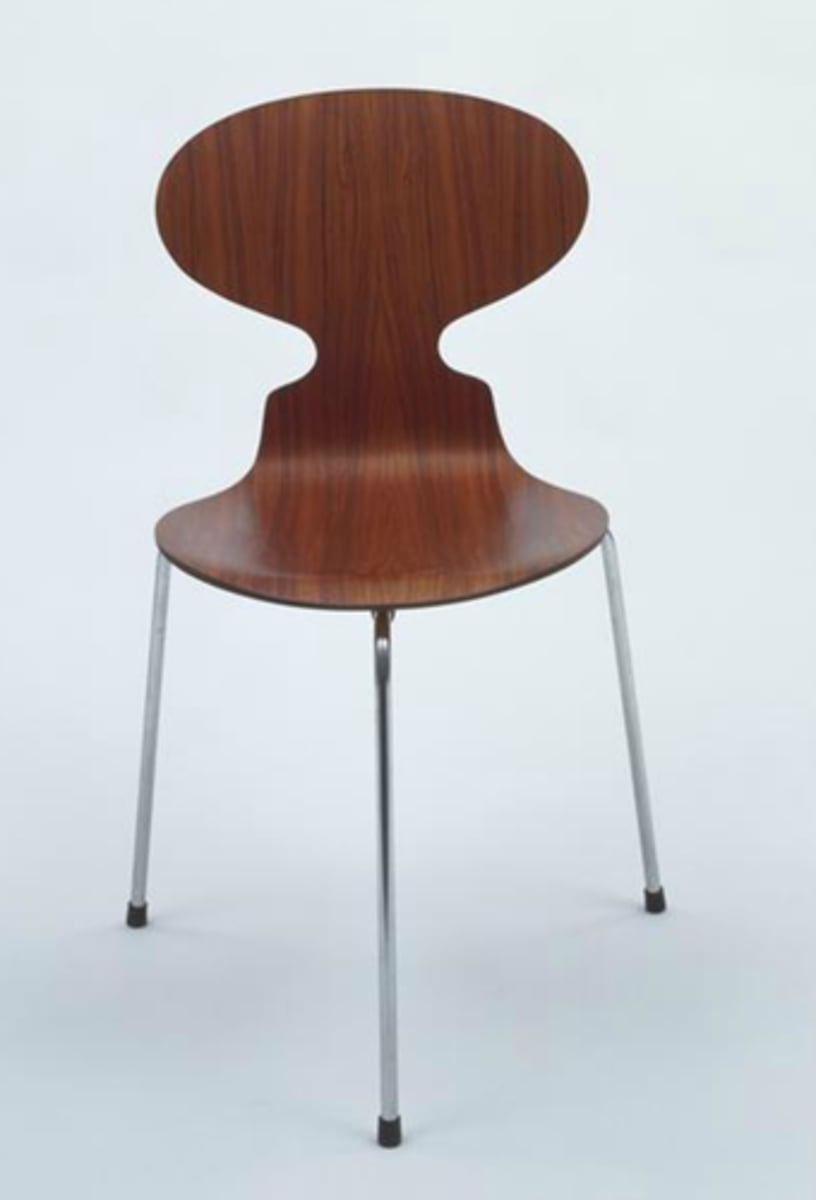
Egg Chair
Designed by Arne Jacobsen; Made of foam upholstered in wool and supported on an aluminum star-shaped base, the high-backed chair was designed by Arne Jacobsen for Fritz Hansen of Denmark.
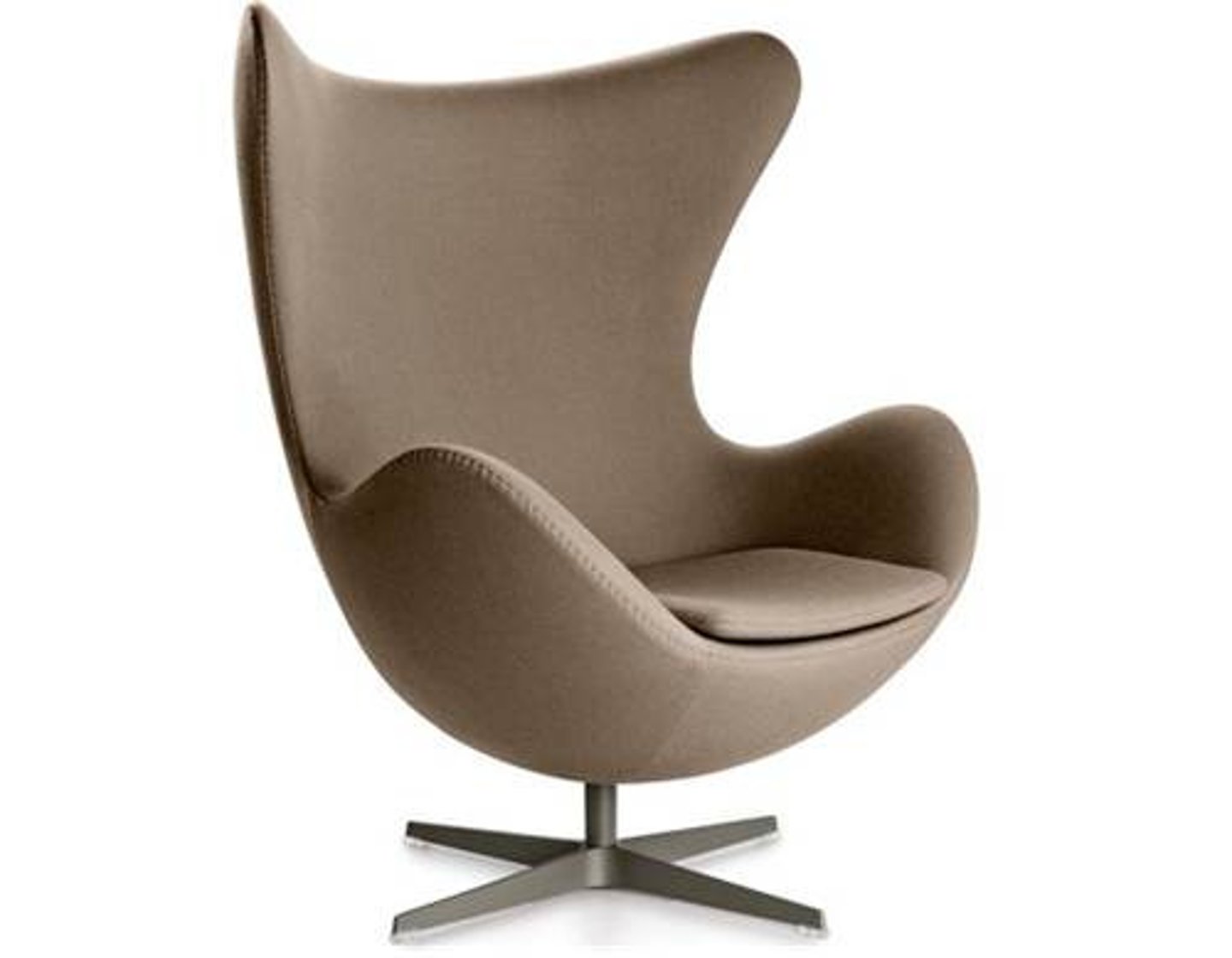
Drop Chair
Designed by Arne Jacobsen; originally designed the chair for the Radisson Blu Royal Hotel in Copenhagen as a stylish, comfortable piece. It is smoothly-curved, drop-shaped backrest and gently sloping legs

Womb Chair
Eero Saarinen's chair and ottoman, designed for Knoll Associates, are made from fibreglass upholstered in foam-filled fabric over a bent tubularsteel frame.
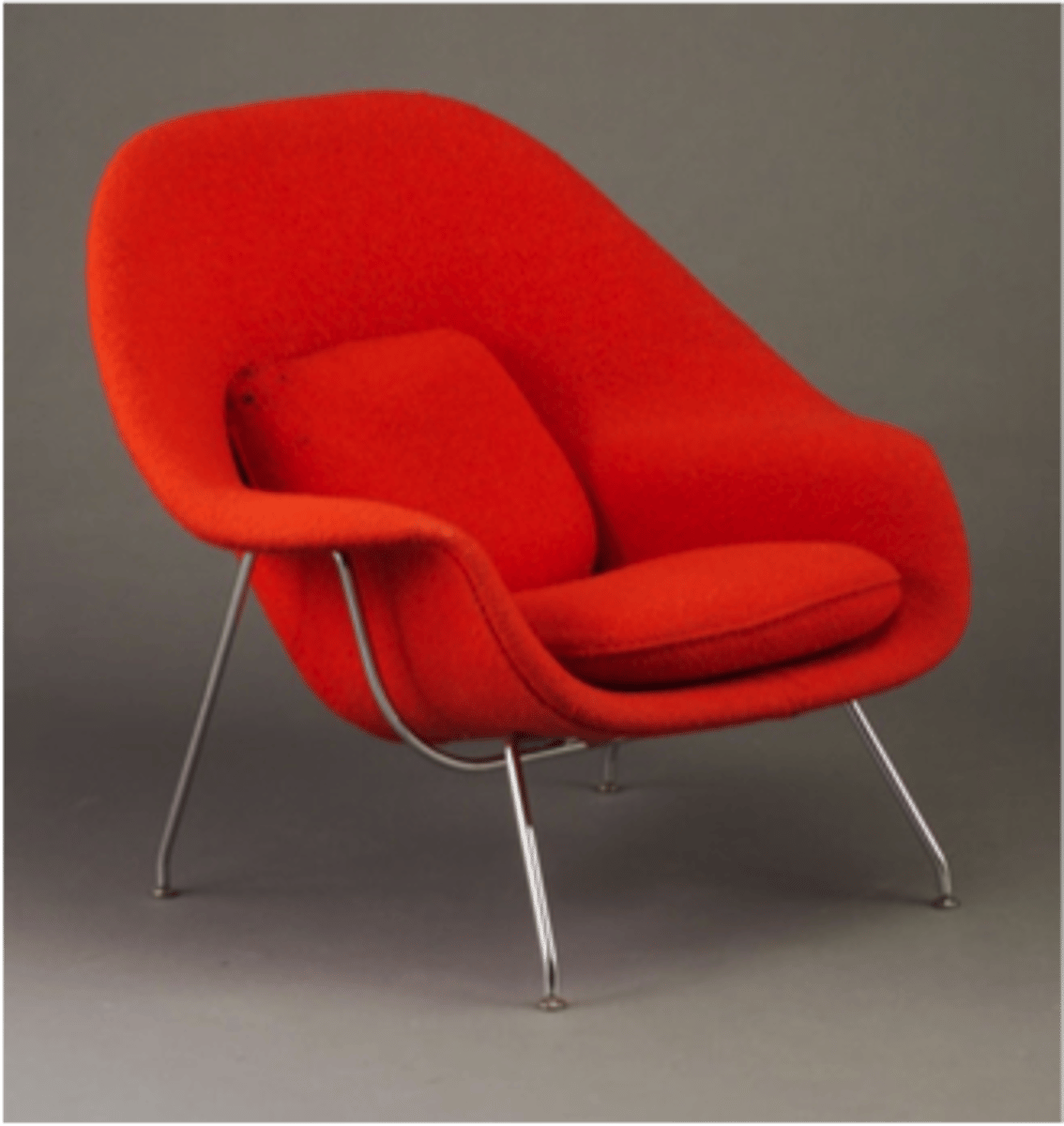
Tulip Chair
designed by Eero Saarinen for the Knoll company. The designs were initially entitled the 'Pedestal Group' before Saarinen and Knoll settled on the more organic sounding name to mirror its inspiration from nature.

Paimio Chair
Alvar Aalto's most popular piece is named for the town in southwestern Finland for which he designed a tuberculosis sanatorium and all its furnishings. The chair was used in the patients' lounge; the angle of the back of the armchair was intended to help sitters breathe more easily.
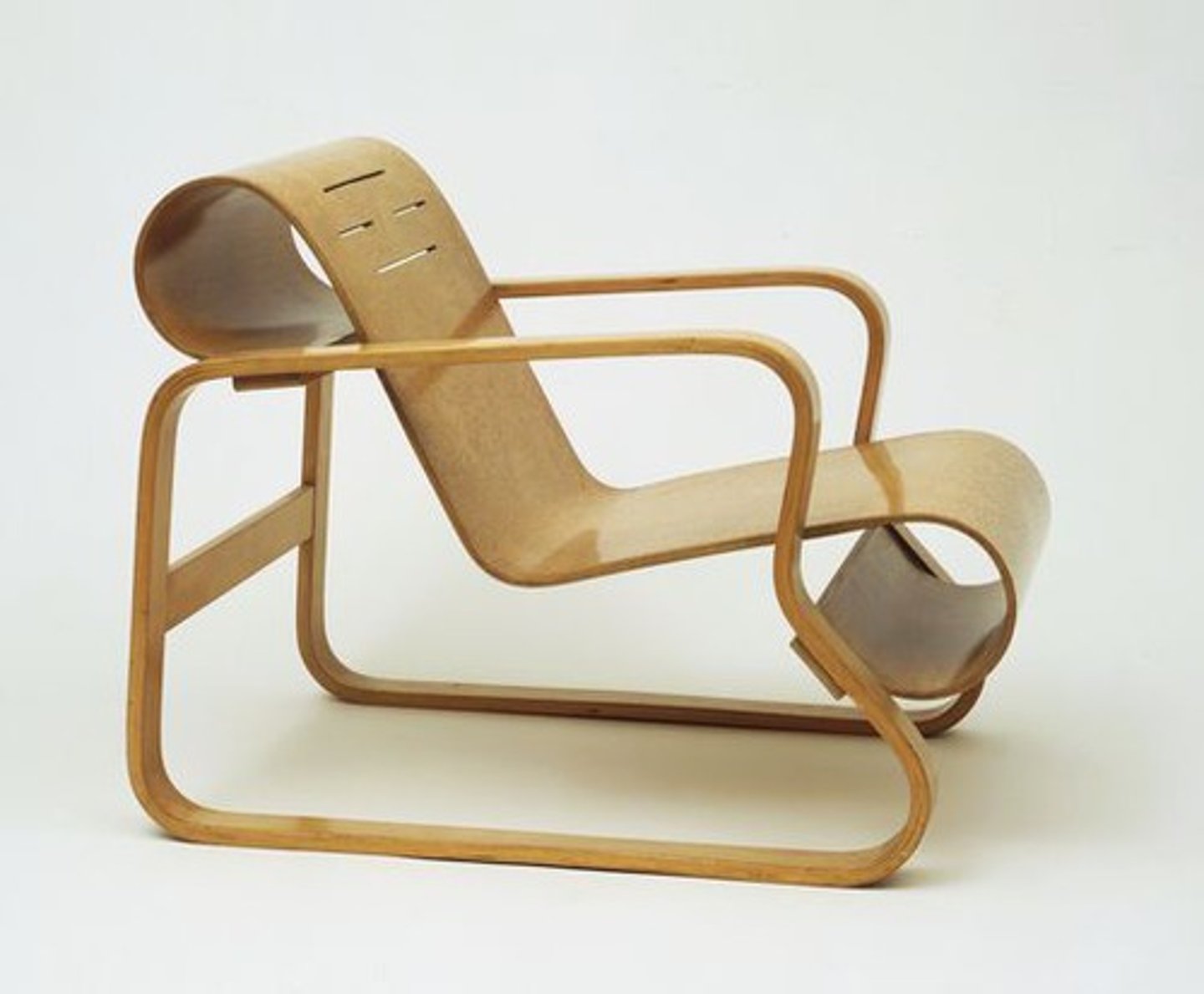
Chieftain Chair
Finn Juhl's sculptural chair with an exposed teak frame and shaped dark green leather seat and back was designed for Niels Vodder of Denmark.
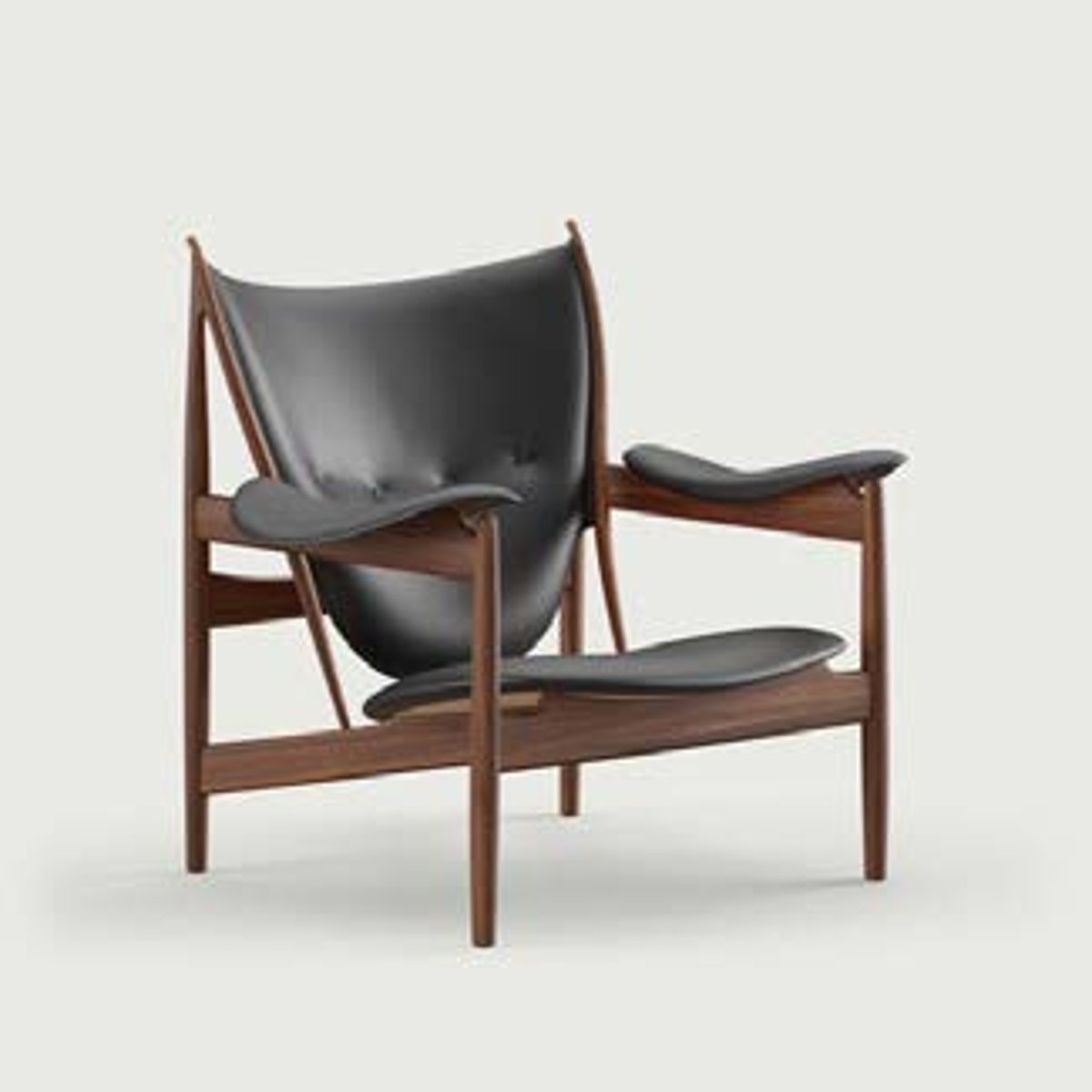
Pelican Armchair
Finn Juhl's fascination for surrealism is clearly visible in this chair. Out of all his many designs, it was probably the one furthest ahead of its time.
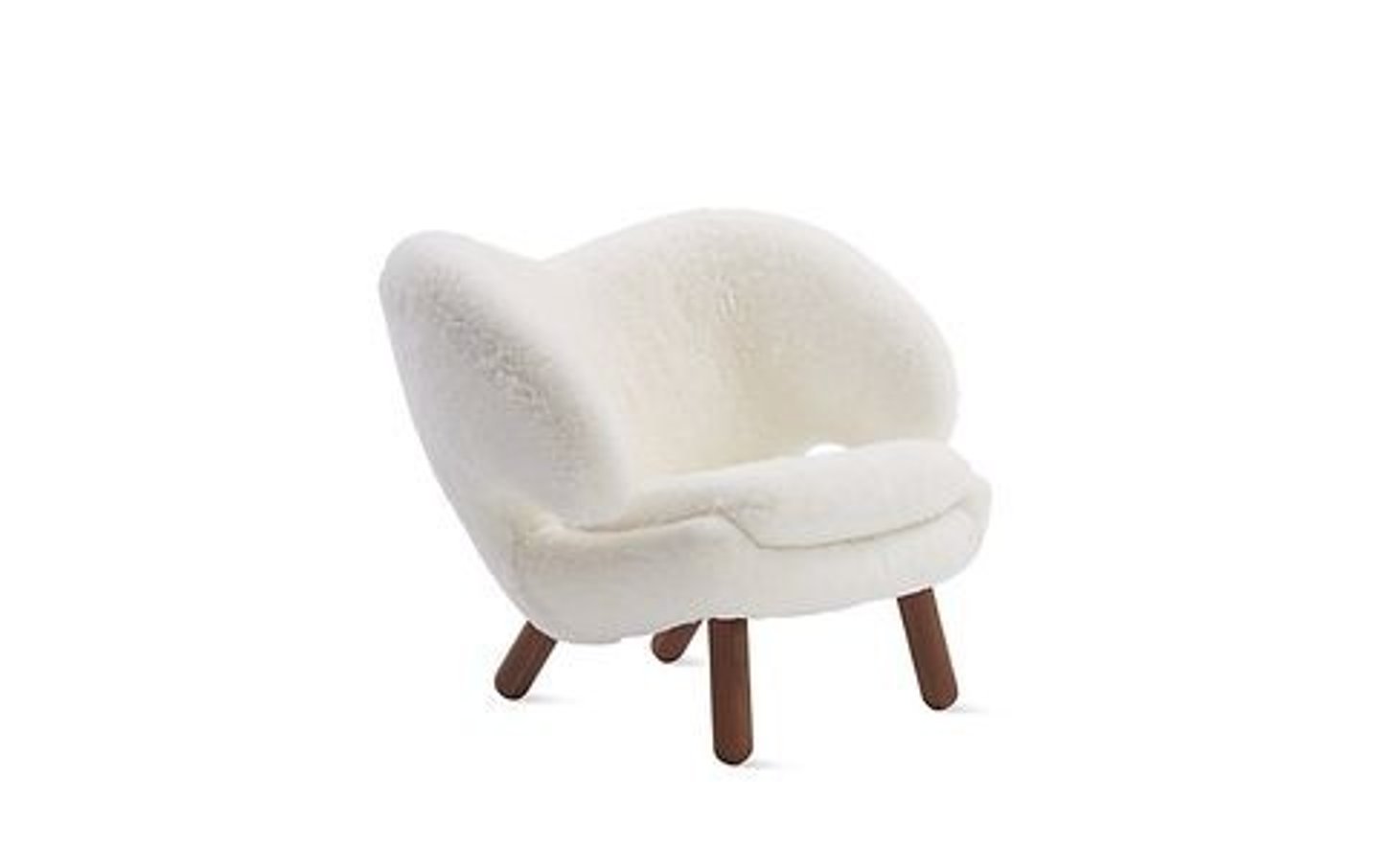
Diamond Chair
This sculptural chair has a vinyl-coated, bent and welded steel-rod body and frame, and was designed by Harry Bertoia for Knoll Associates. It would have had a thin, upholstered cushion.

Bertoia Side Chair
Side chair by Harry Bertoia made with welded rods creating a delicate filigree appearance.
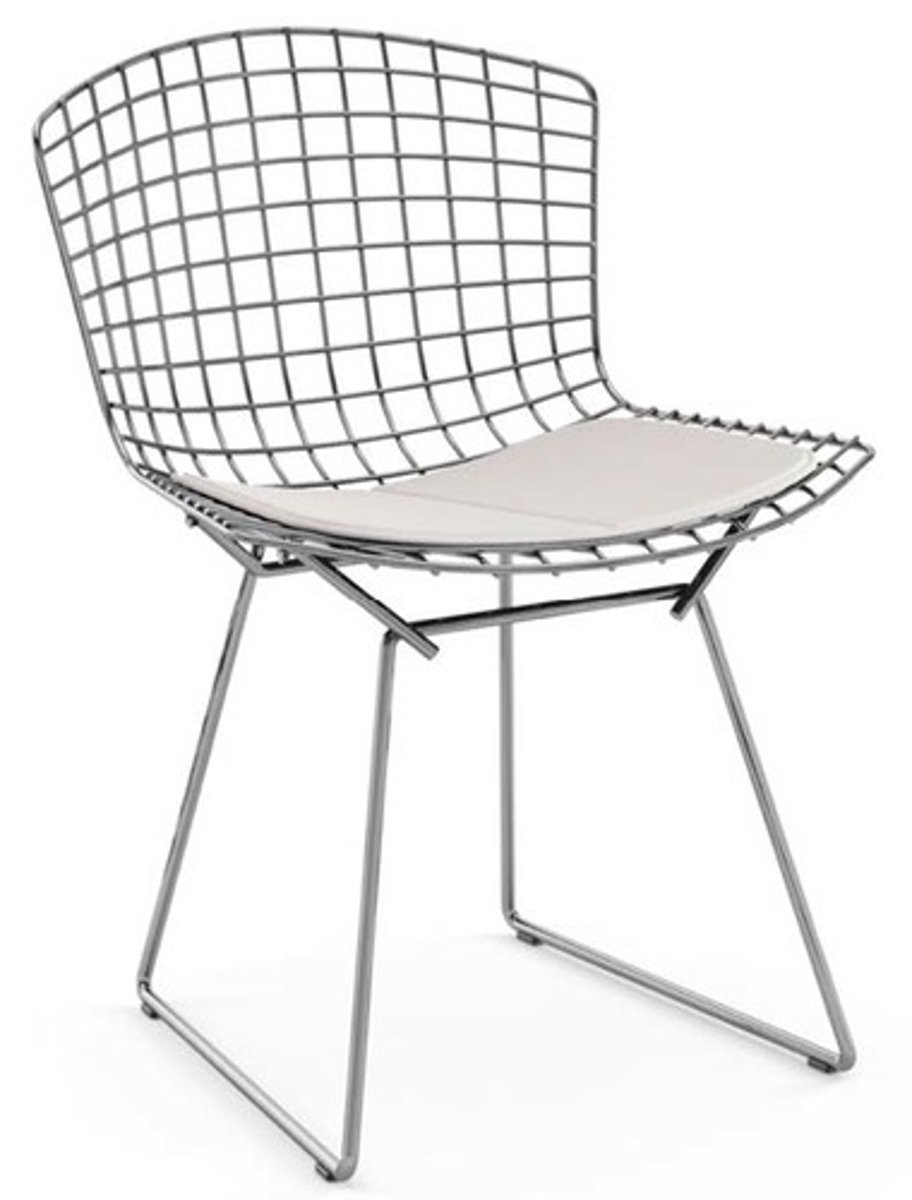
Heart Chair
Verner Panton's sculptural chair takes inspiration from the work of Arne Jacobsen. The metal frame and foam construction is fully upholstered in a bright red fabric
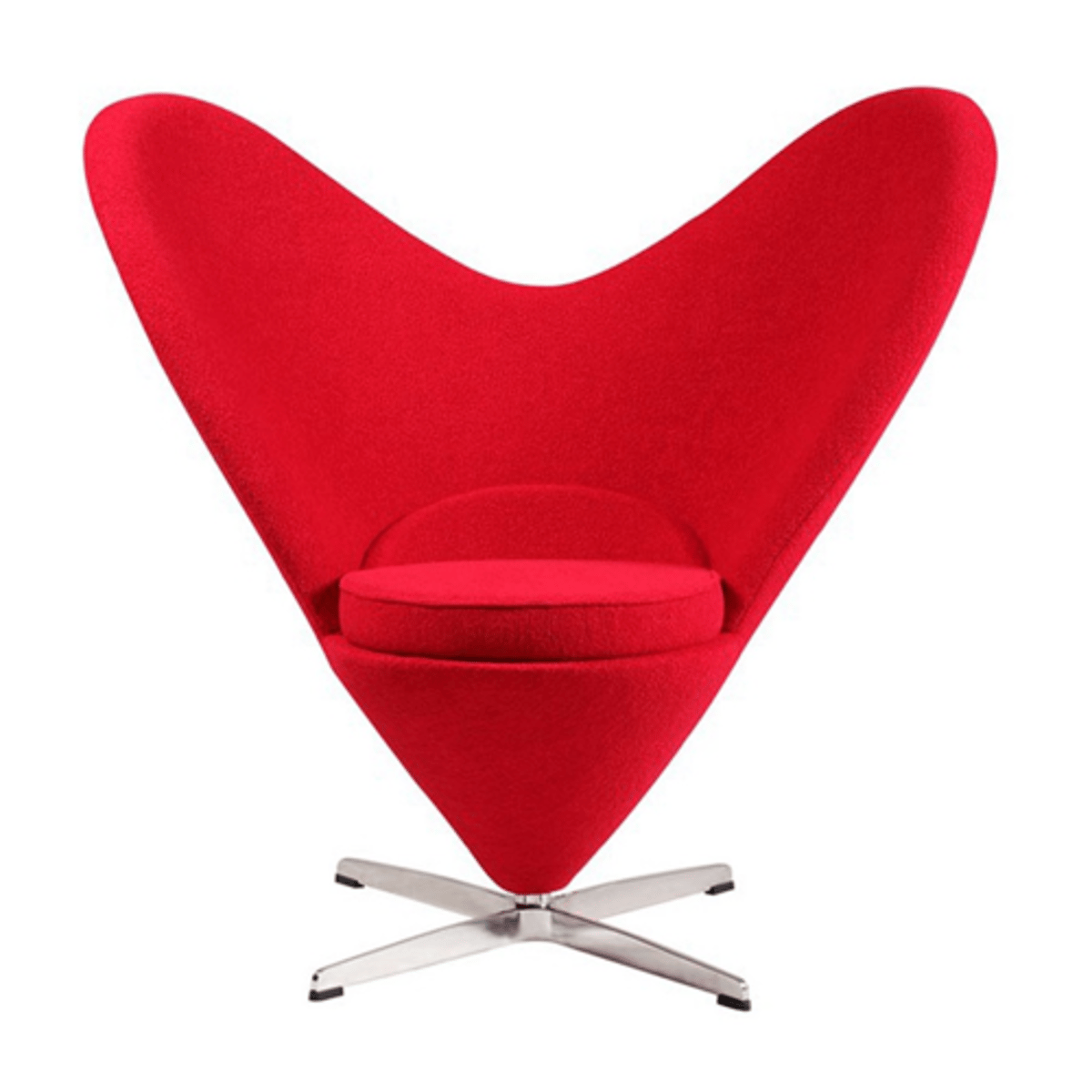
S Chair
The first cantilevered chair made from injection-moulded plastic, it was produced by Fehlbaum Produktion of Germany designed by Verner Panton.
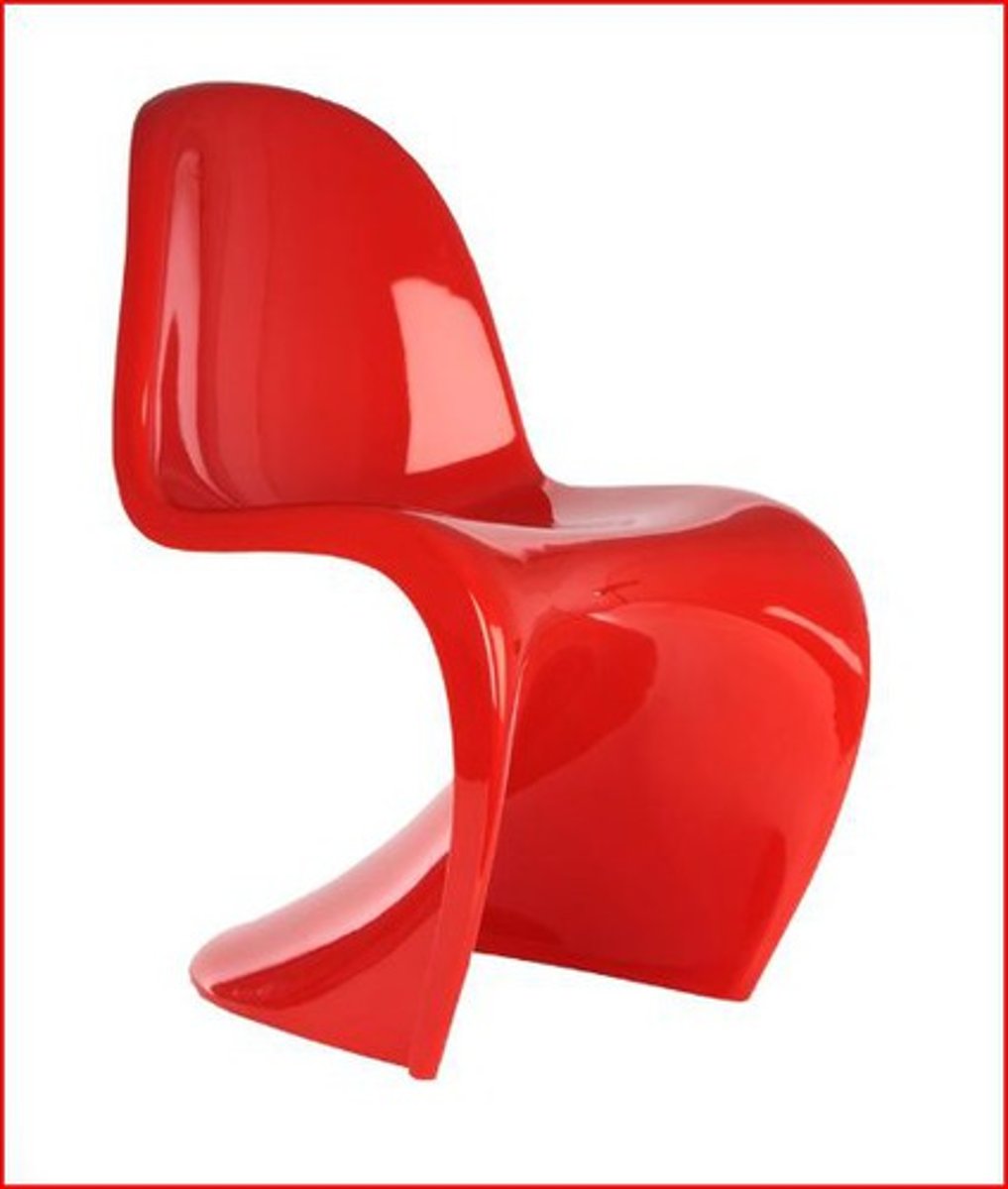
Cone Chair
Designed by Verner Panton; The chair consists of a cone-shaped metal frame which rotates at its base on a cross-shaped metal foot.
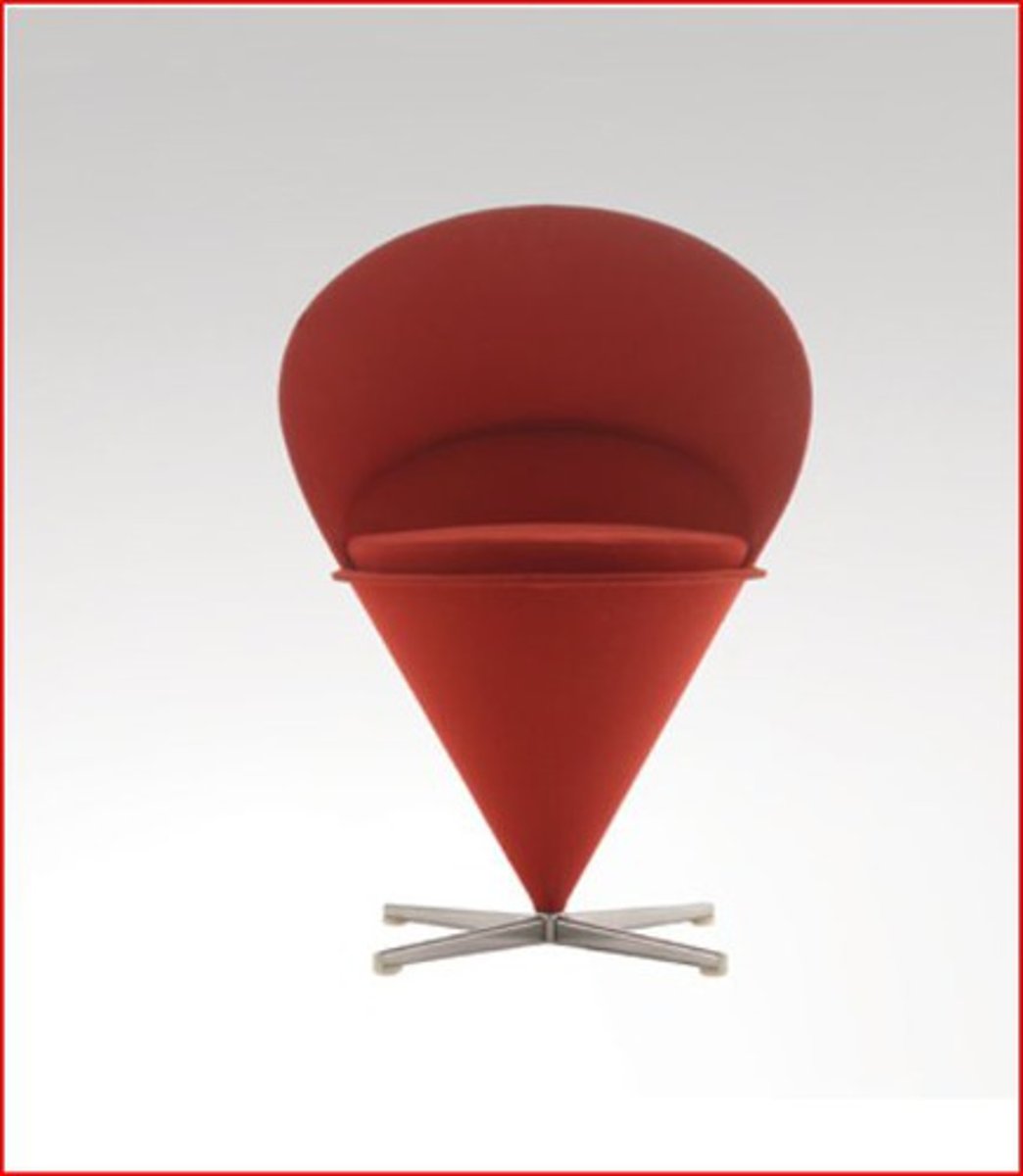
Bubble Chair
Designed by Eero Aarnio; this chair does not have a pedestal but hangs from the ceiling. The chair is suspended from above and leads to a feeling of floating like a bubble. It is considered a classic of industrial design and advanced use of plastics in furniture design.
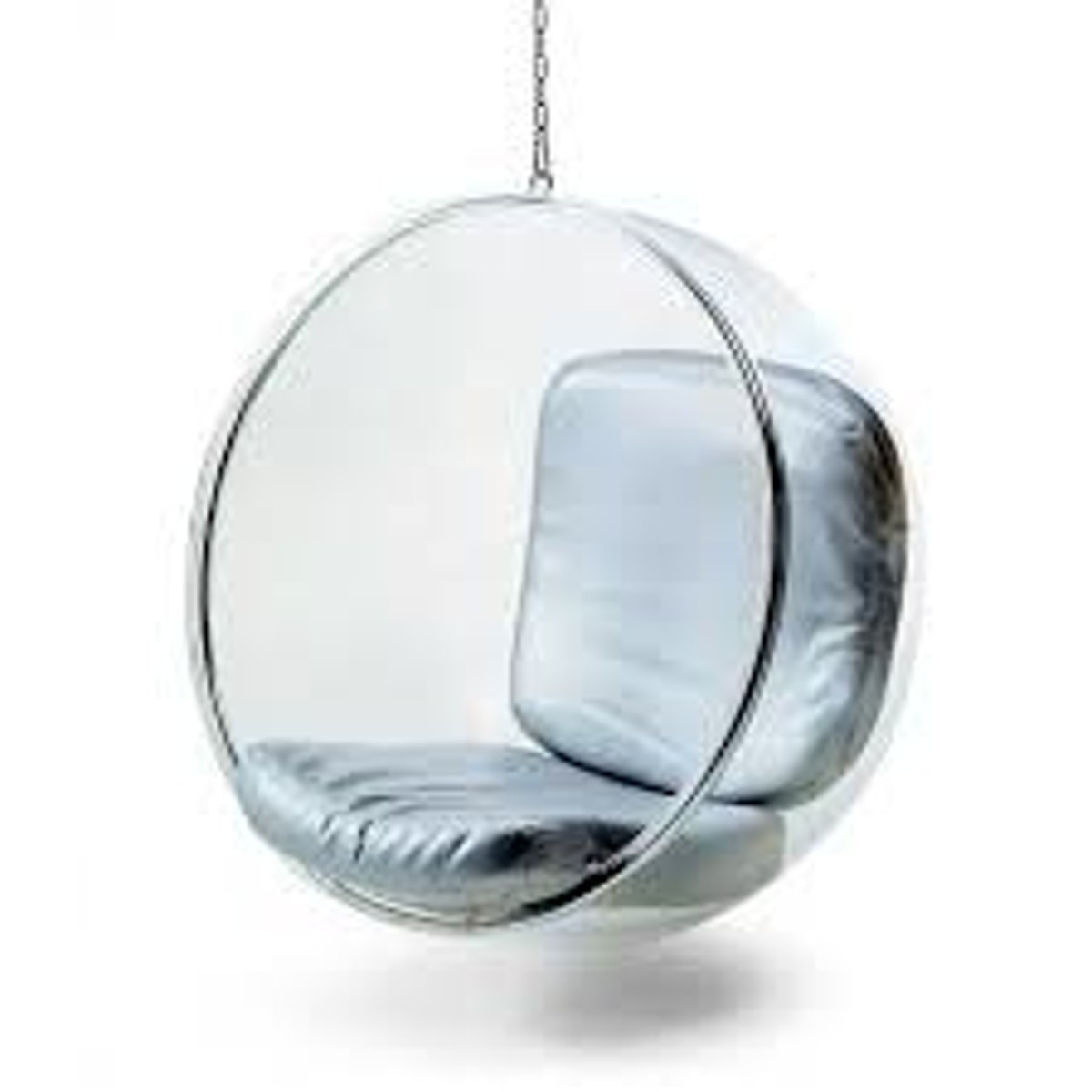
Ball Chair
The nearspherical shell of this Eero Aarnio chair is lined with red fabric-covered foam and is mounted on a painted aluminium base. It was designed for Asko Oy of Finland.
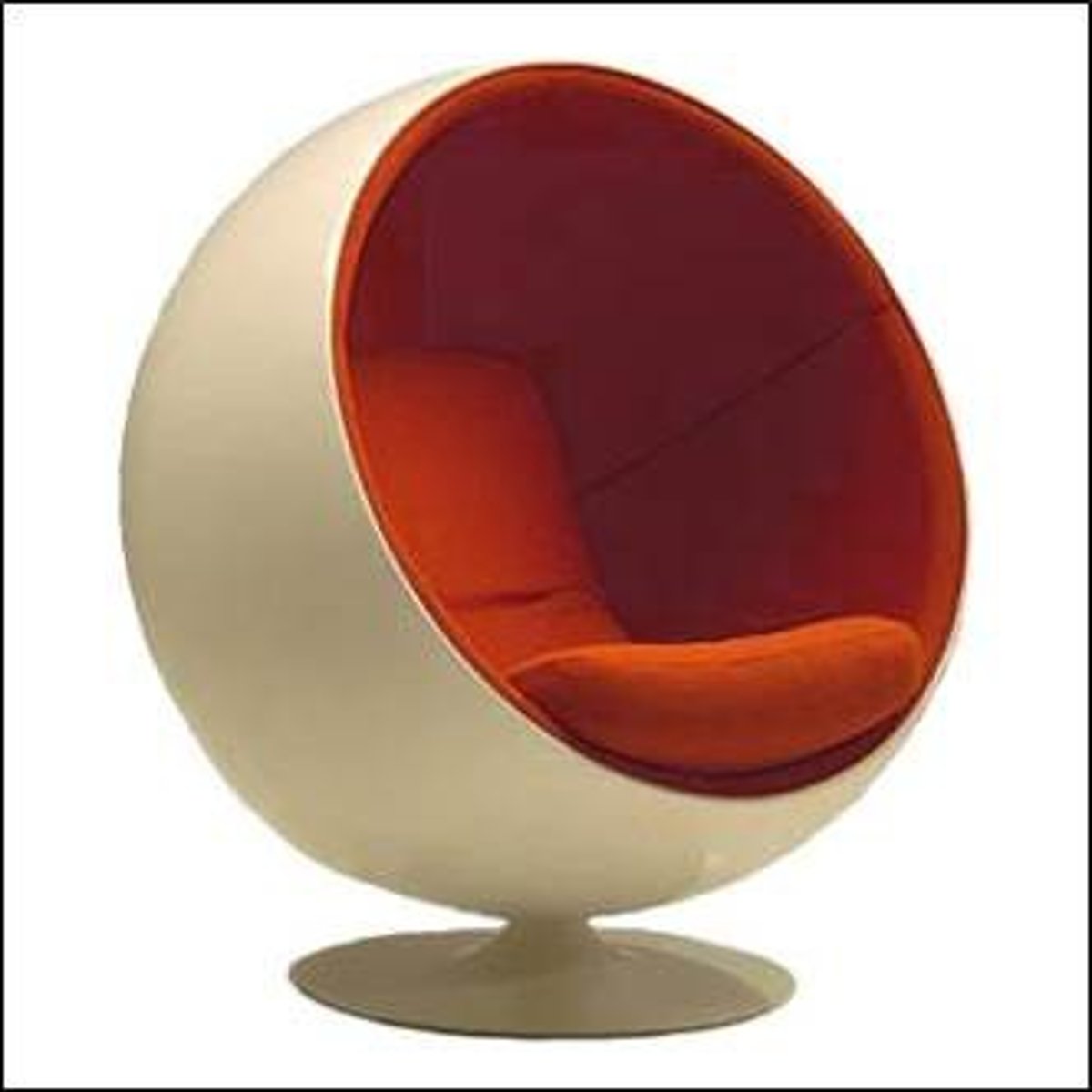
Pastil Chair
Also called Gyro Chair; Designed by Eero Aarnio for Asko Oy of Finland, the fibreglass-reinforced polyester Pastil chair is moulded to fit the shape of the sitter. It can be rocked from side to side.
